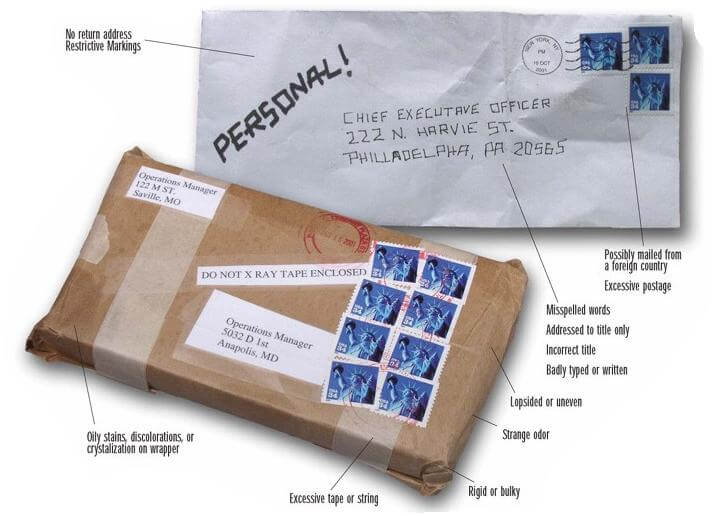Home | About Saint Charles | Directory | Safety and Security | Suspicious Packages and Bomb Threats
Suspicious Packages and Bomb Threats
Suspicious packages can come in all shapes and sizes. In general terms, a suspicious package is any bag, box, backpack, package, or other item left unattended or that otherwise seems out of place. For example, a package on a mailroom counter is not necessarily suspicious. But place that same unattended package on a train station platform, it becomes suspicious. Suspicious packages should be immediately reported to a campus Safety Officer.
SOME TYPICAL CHARACTERISTICS which, in combination, may trigger suspicion are:
- Restricted marking such as “Personal” or “Special Delivery”
- No return address or one that cannot be verified as legitimate
- A city or state in the postmark that does not match the return address
- Unusual weight based on size
- Odors – Some of these chemicals may also give off unusual odors, which the human nose will quickly sense.
- Sweating – Some chemicals used in explosives may “sweat” and result in “greasy” marks on wrappings.
- Lopsided or oddly shaped, strange odors, oily stains, crystallization, protruding wires, rigid or bulky, excessive tape or string.
- Feel – Letters have a normal “feel.” Those that contain devices may simply not “feel” right, or they may be “stiff.” This can indicate the presence of plastic or metallic components as opposed to the normal paper stuffing.
Suspicious Letters or Packages: What to Do
- Stop, don’t handle. Do not shake or empty the contents of the envelope or package.
- Isolate it immediately by keeping others away. Place the envelope or package in a plastic bag or some other type of container. If you do not have any container, then COVER the envelope or package with anything (e.g., clothing, paper, trash can, etc.) and do not remove this cover to prevent leakage of contents.
- Close any open doors or interior windows.
- Turn off local fans or ventilation units in the area and thermostats.
- LEAVE the room and CLOSE the door, or section off the area to prevent others from entering (i.e., keep others away).
- Isolate all persons exposed to the contents in another area nearby.
- LIST all people who were in the room or area when this suspicious letter or package was recognized.
- If you develop signs or symptoms of exposure, wash/flush the affected area with water.

If You Are the Supervisor
- If not already in the immediate area, stay out so as to not risk contamination.
- Get as much relevant information as possible.
- Notify 9-1-1 and appropriate chain-of-command, (if not done so already).
- Meet responders at the location they designate.
If You Suspect it is a Bomb
- DO NOT CHANGE OR TOUCH ANYTHING, including using the phone, turning lights, computers, etc. on/off. LEAVE EVERYTHING AS IS!
- Verbally notify others in the area of the situation.
- EVACUATE TO AN ESTABLISHED SAFE PERIMETER WHICH MAY BE UP TO 500 FEET OR MORE (this is about the length of two football fields.
- DO NOT USE ANY ELECTRICAL DEVICE WITHIN 500 FEET OF THE SUSPICIOUS DEVICE, including cell phones, blackberries and two way radios, etc. since radio frequencies may detonate a device.
- When you’re 500 Feet away, call 9-1-1


